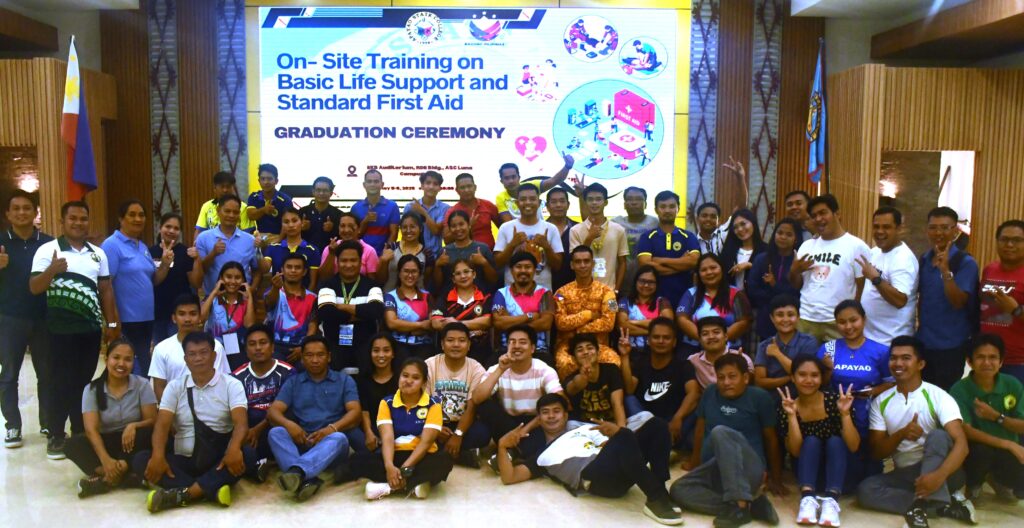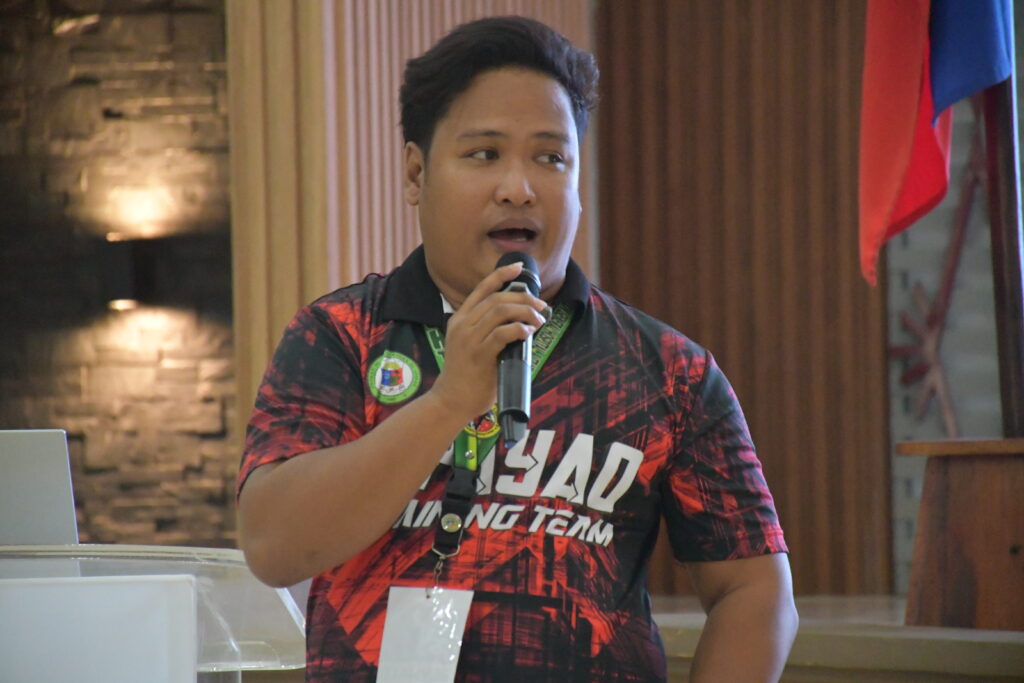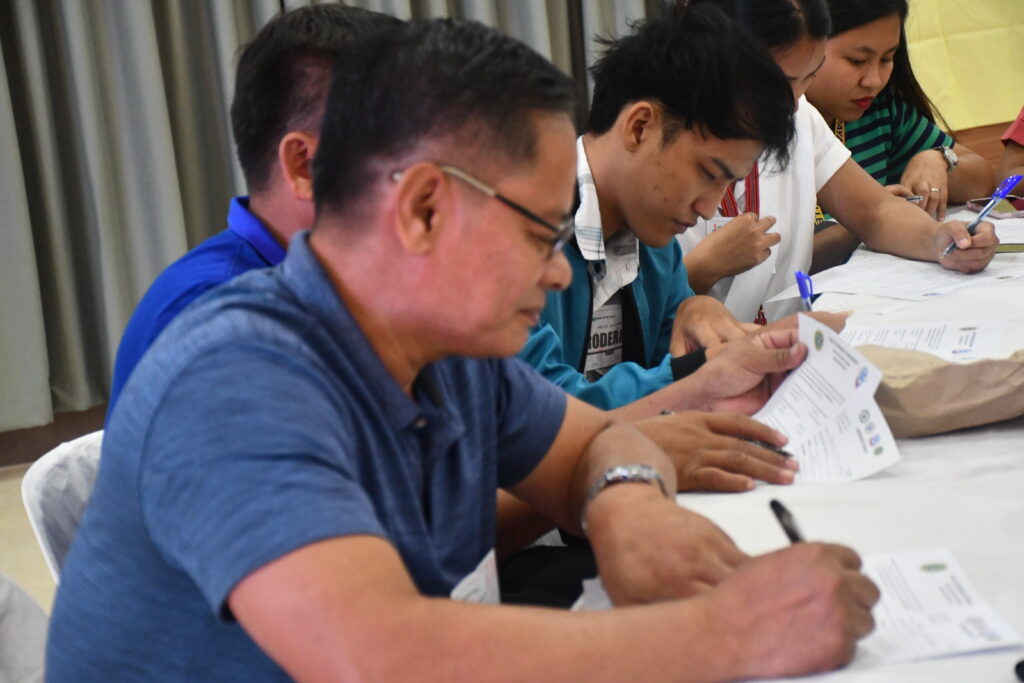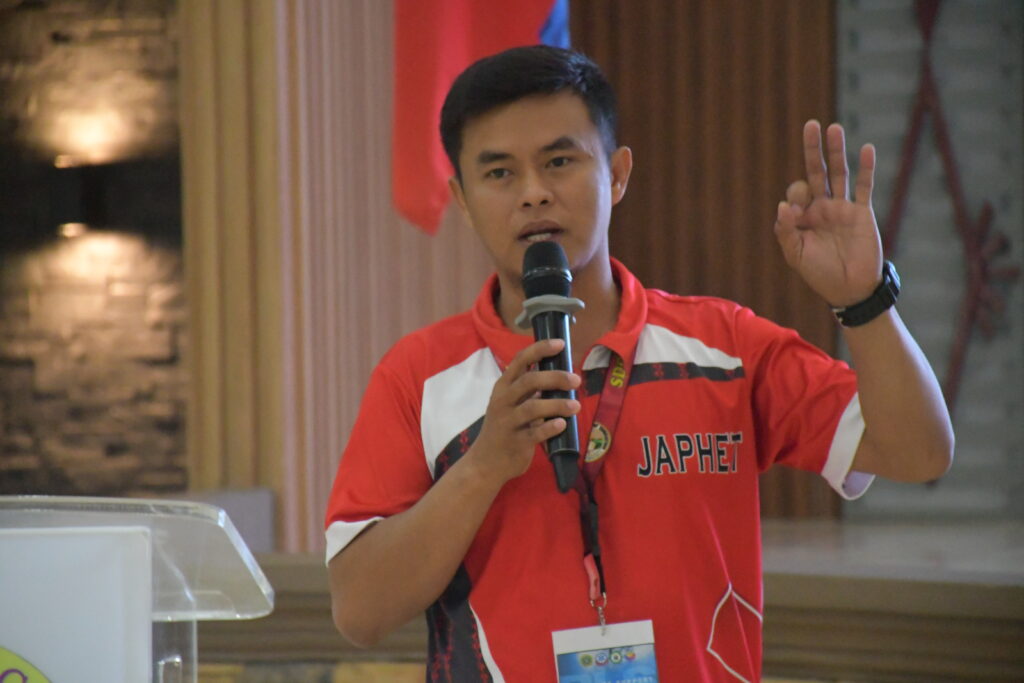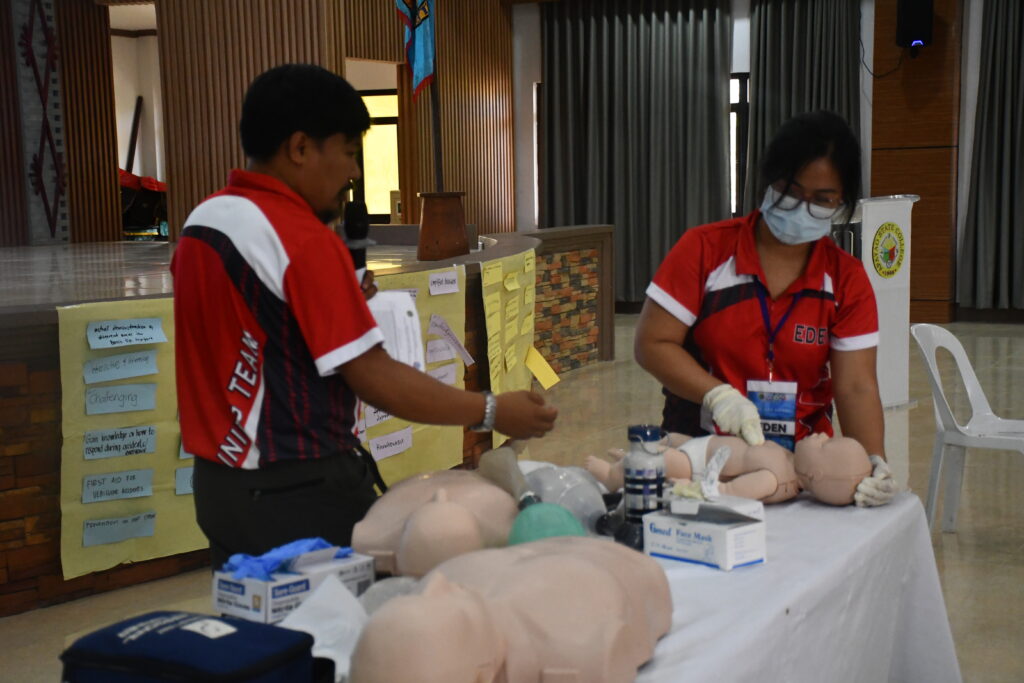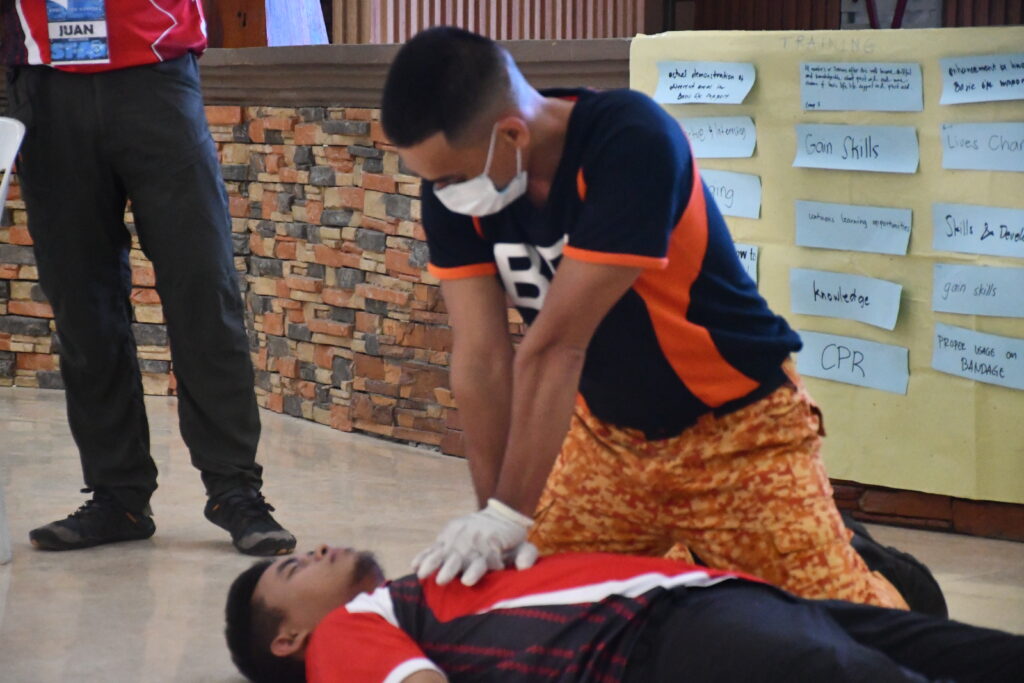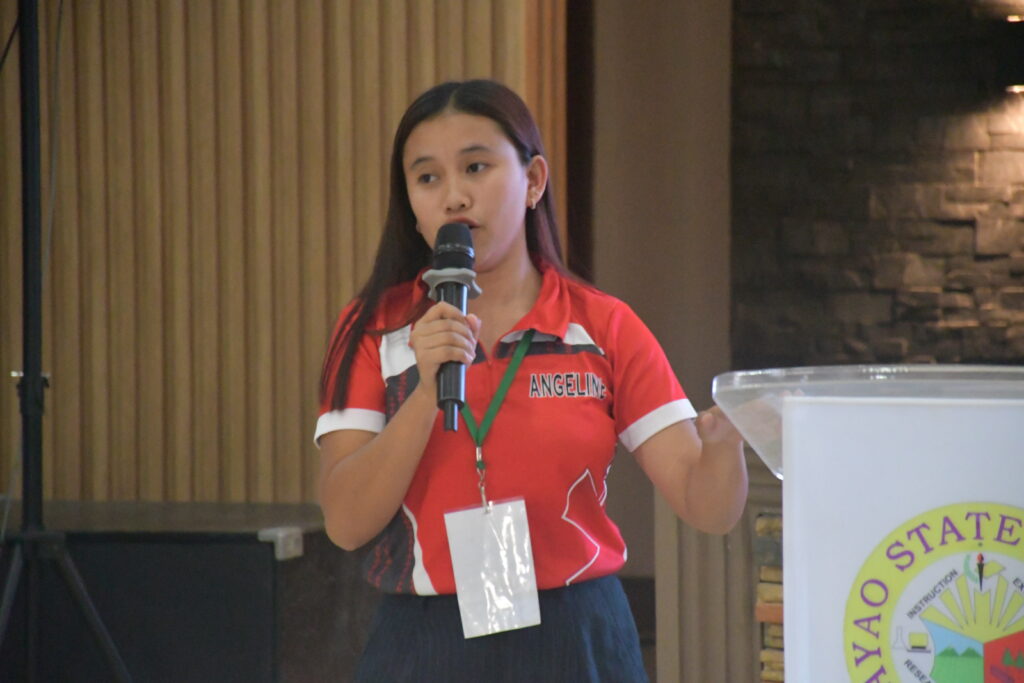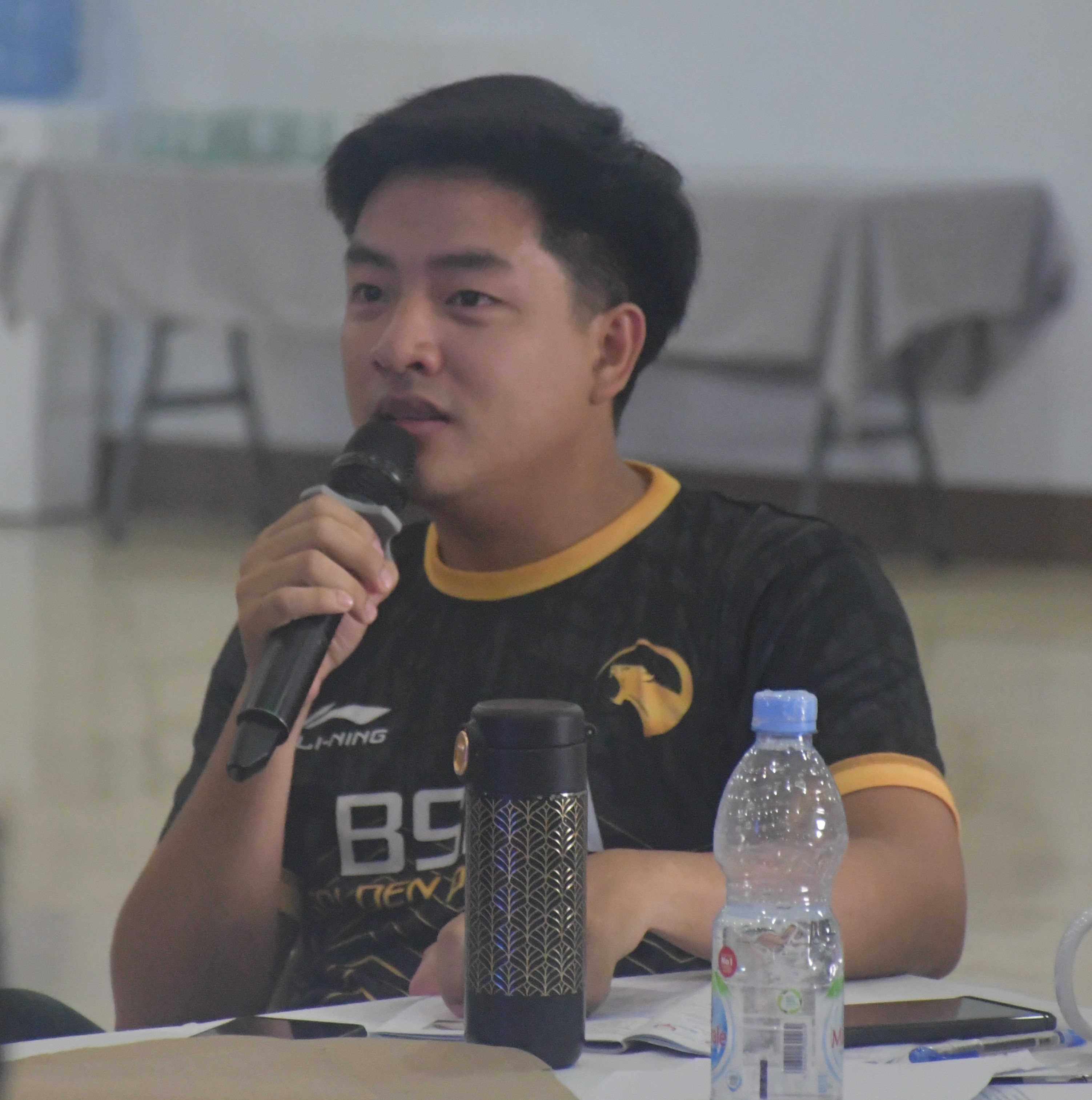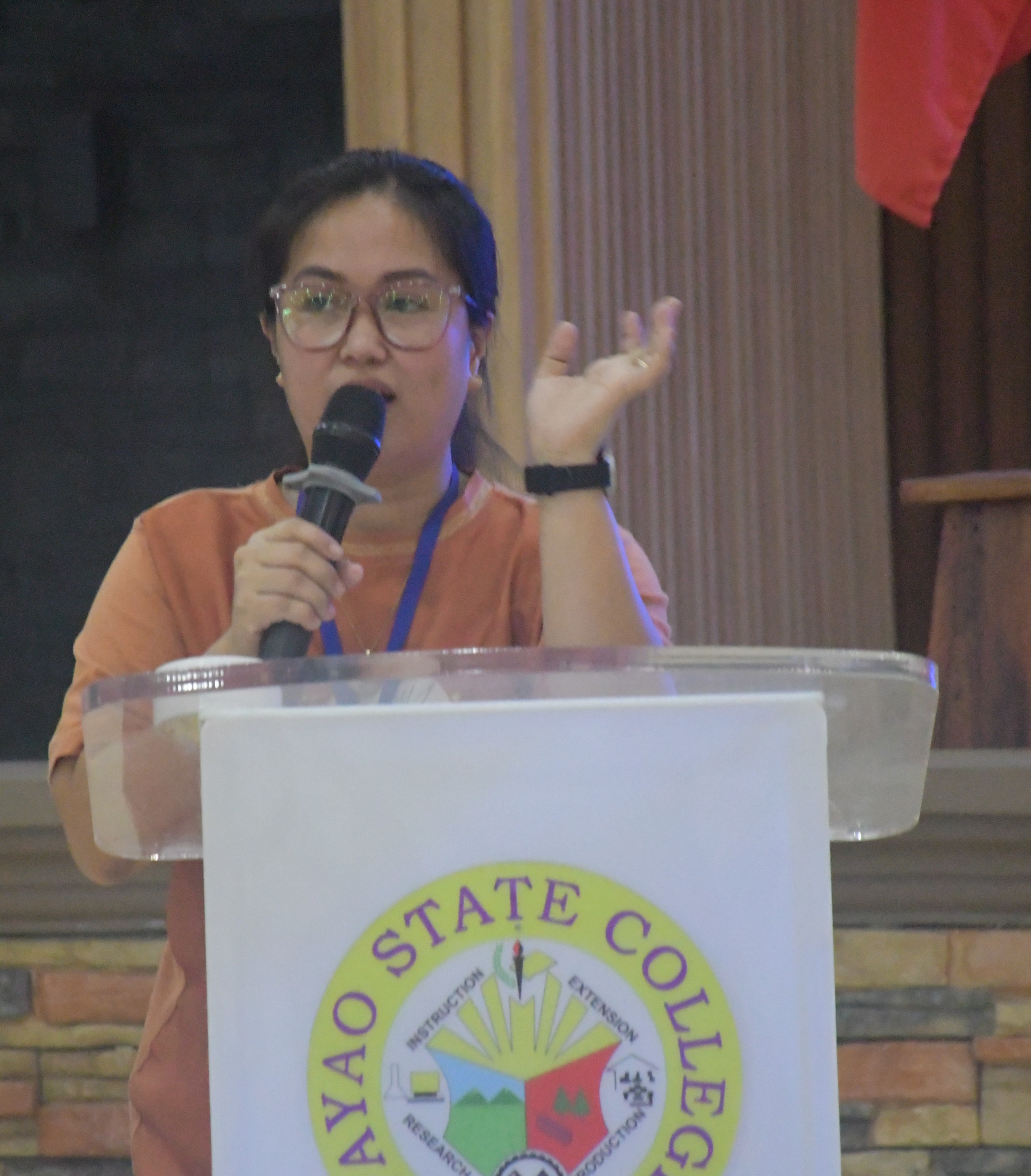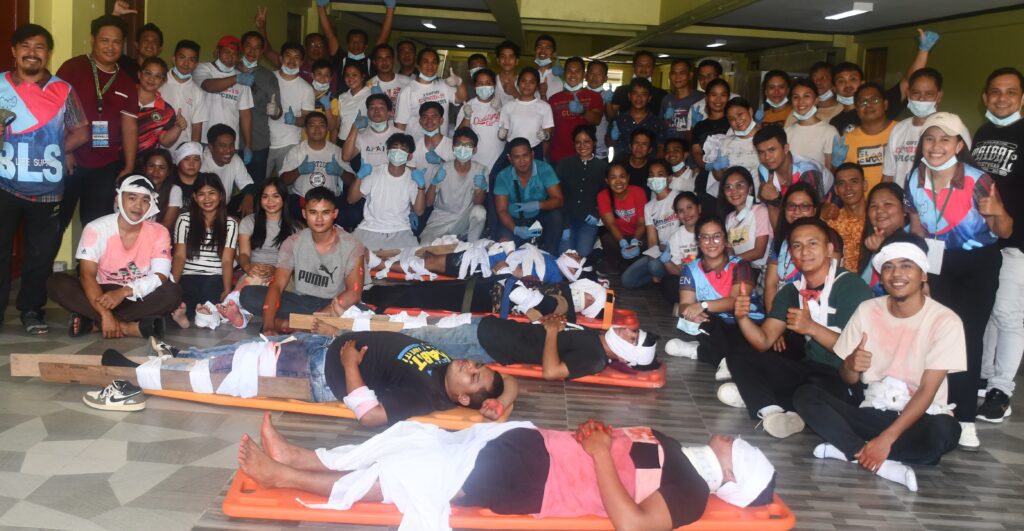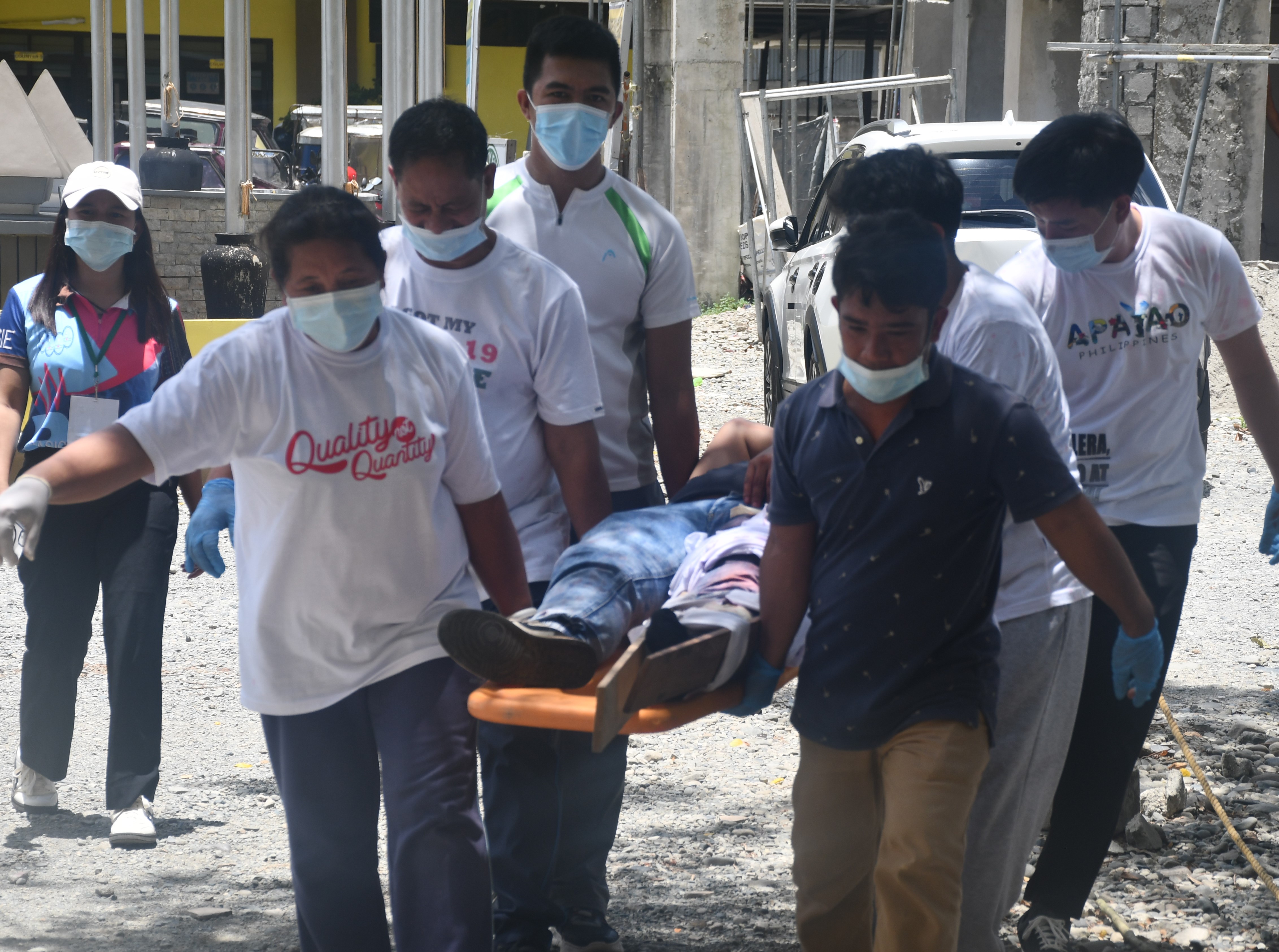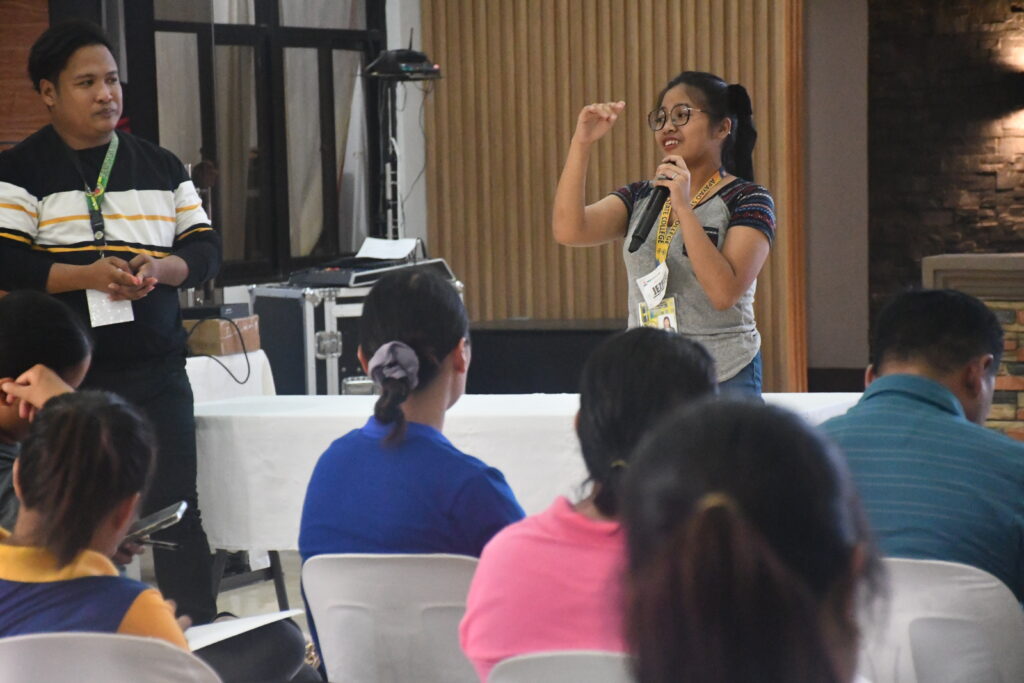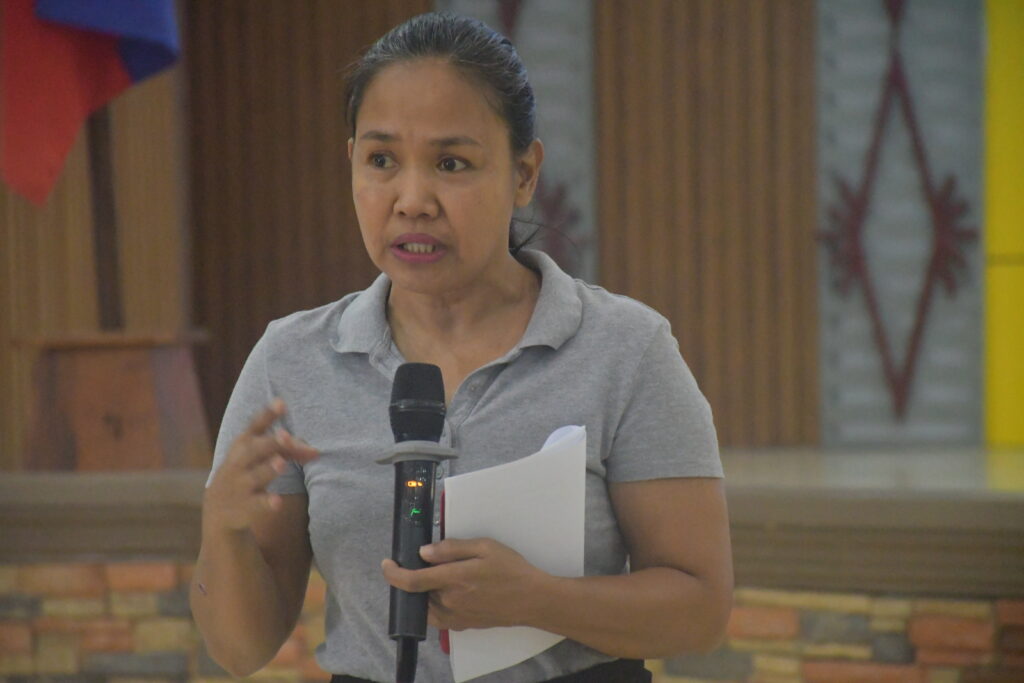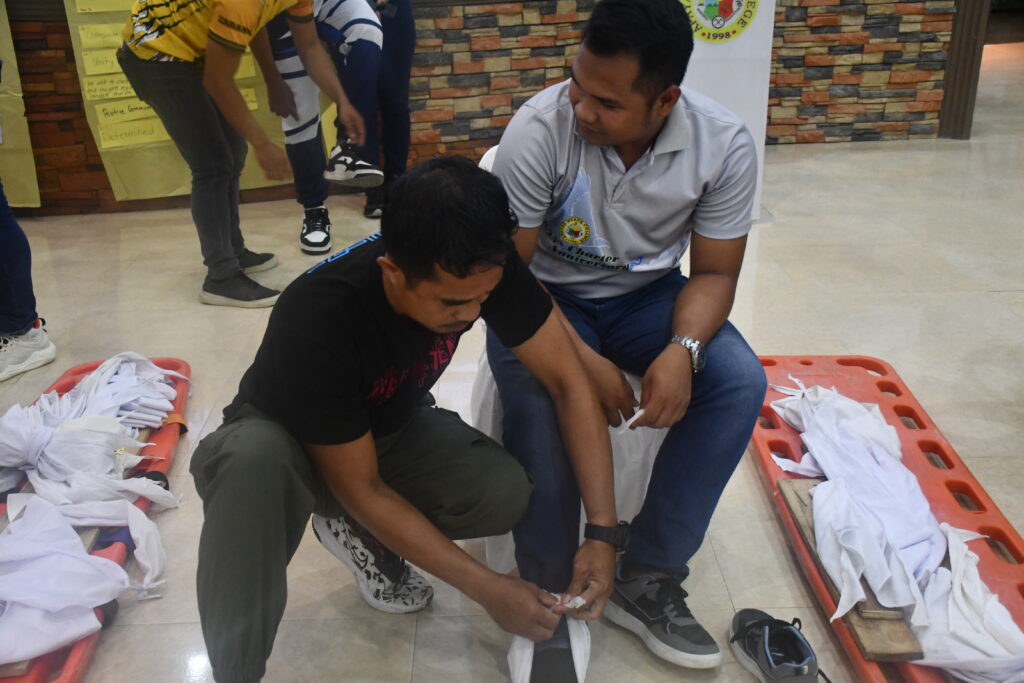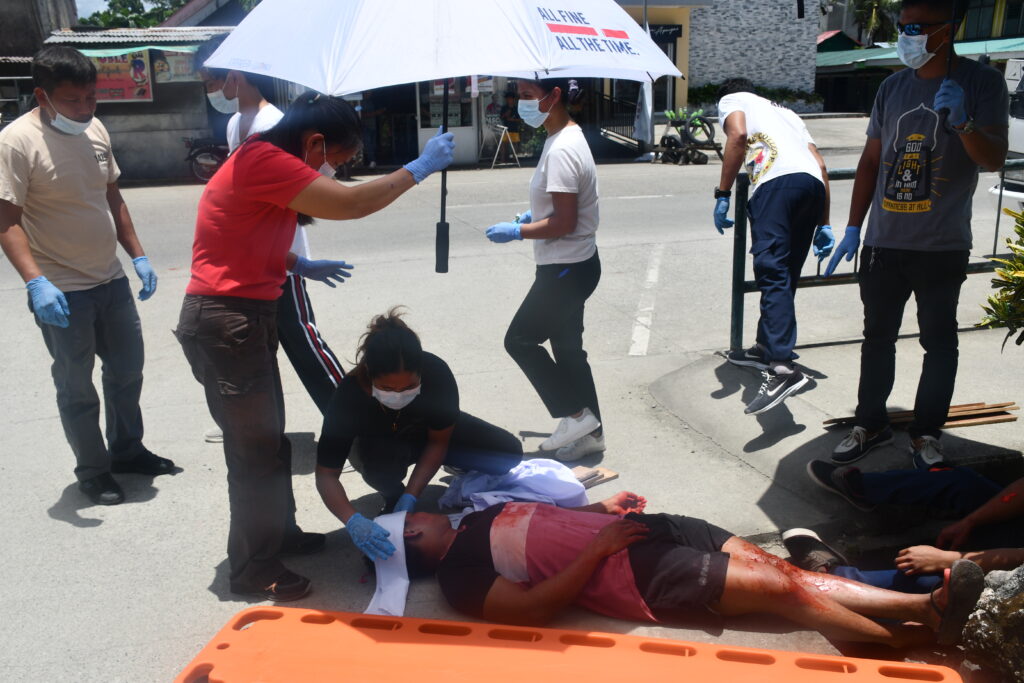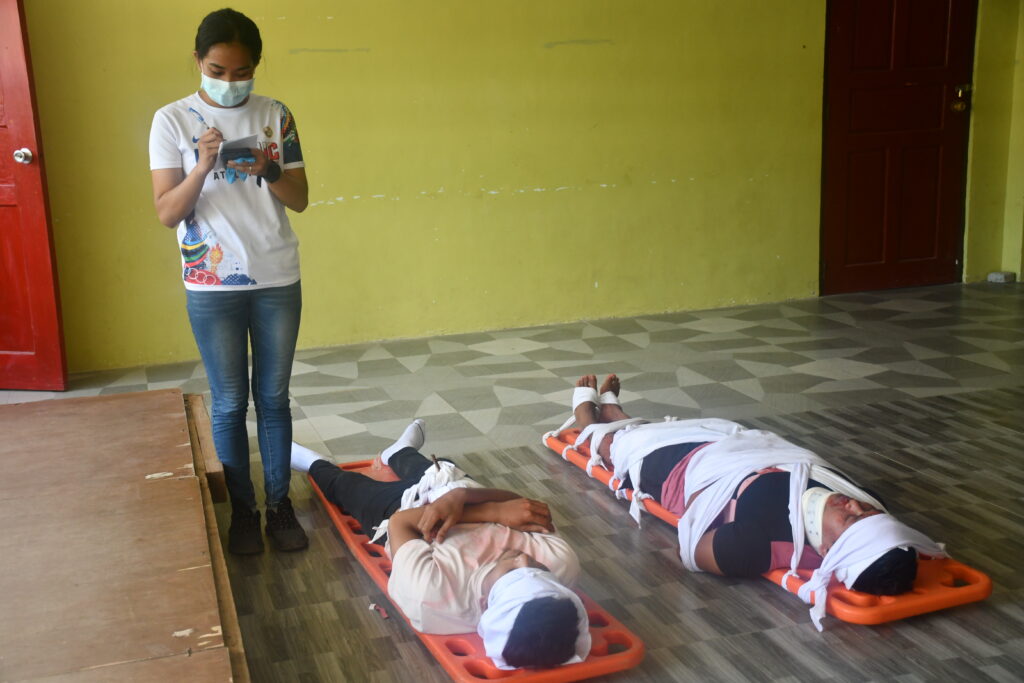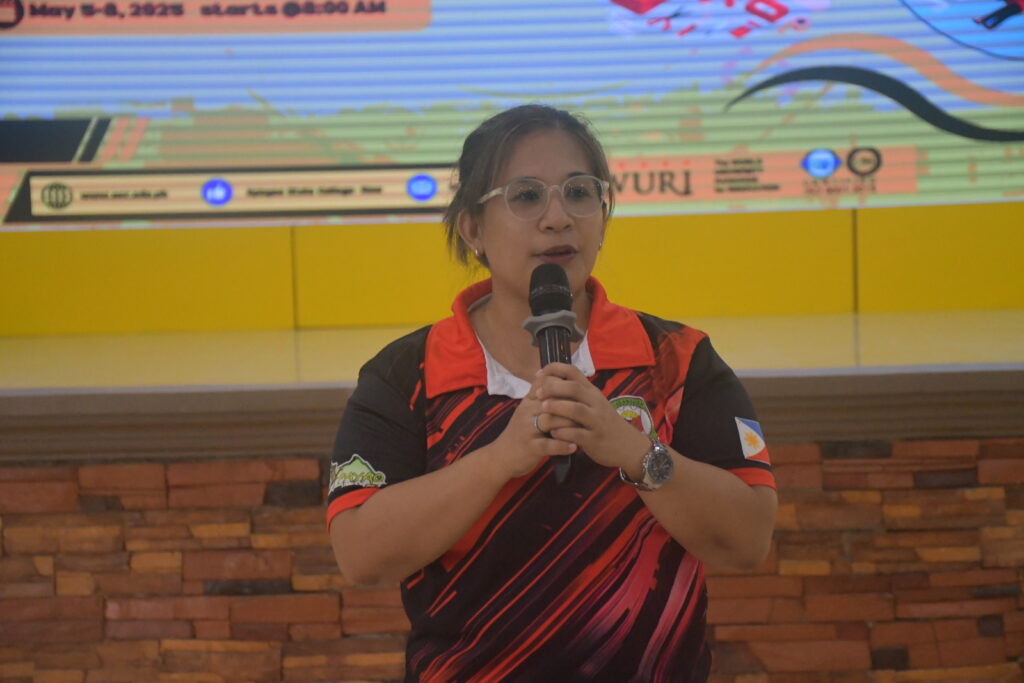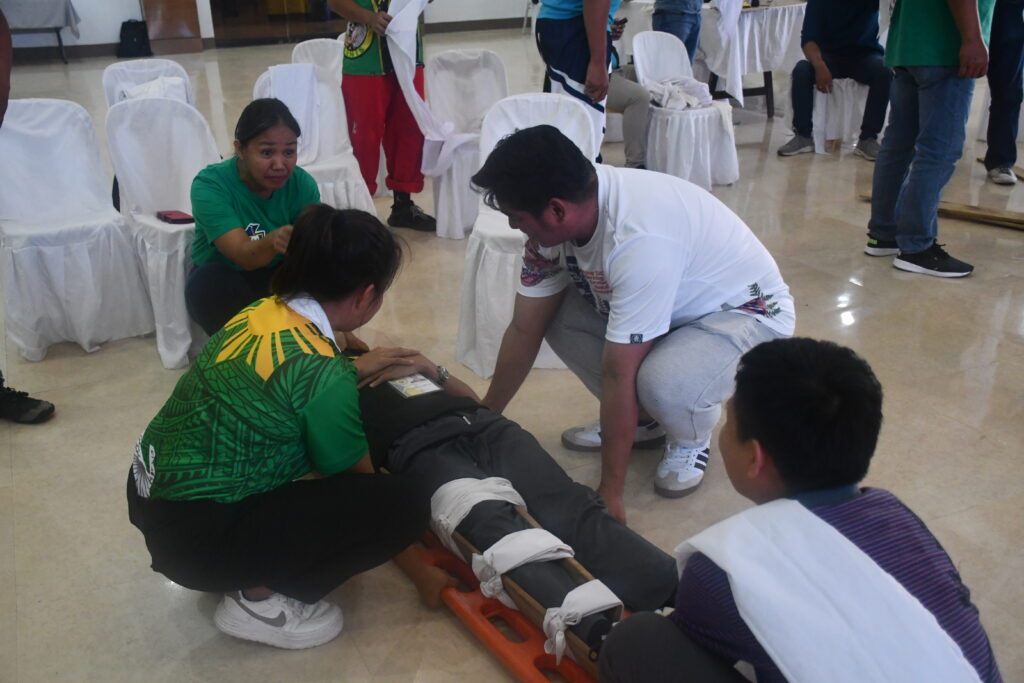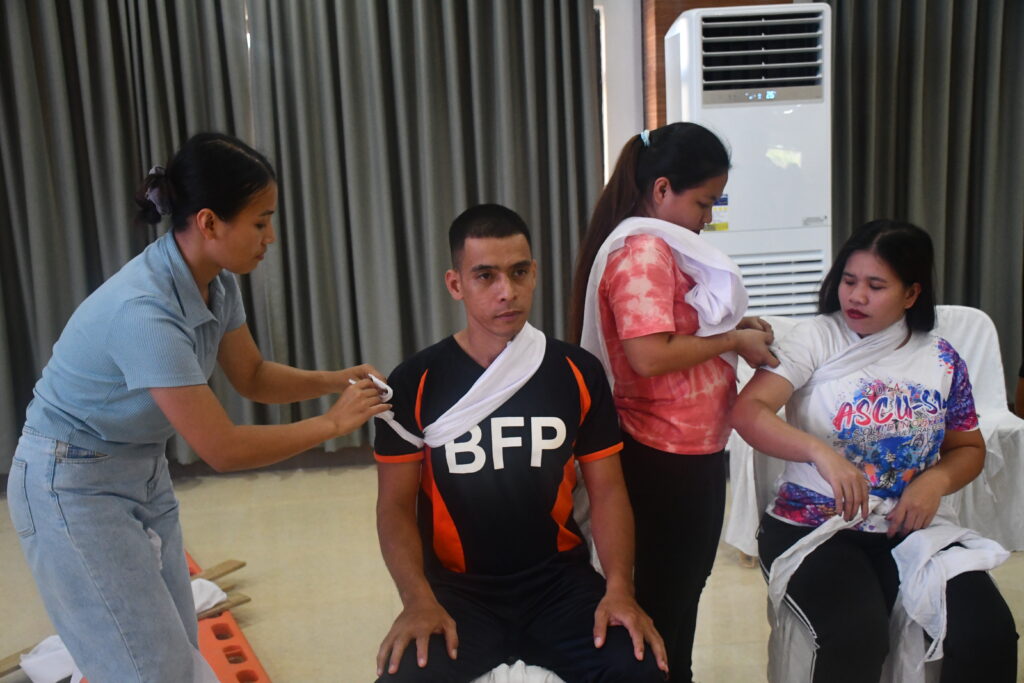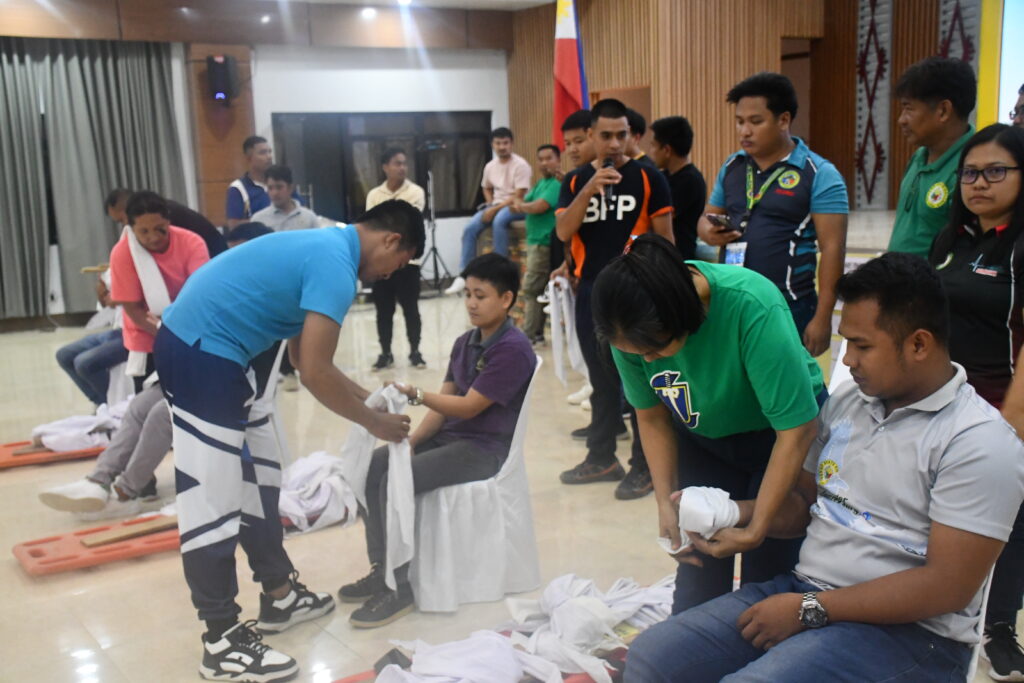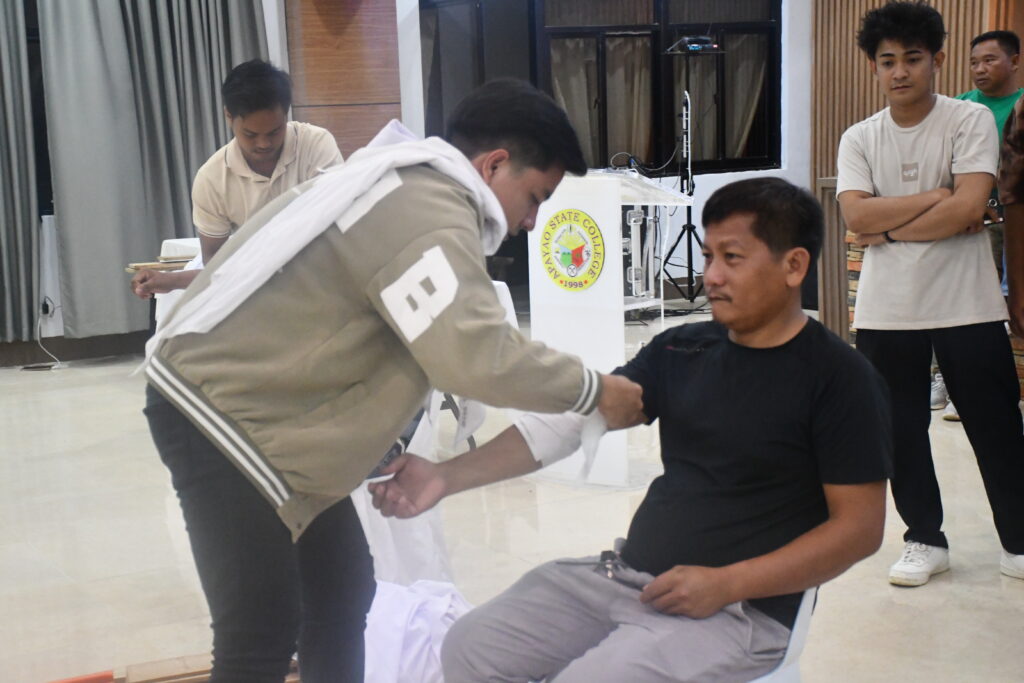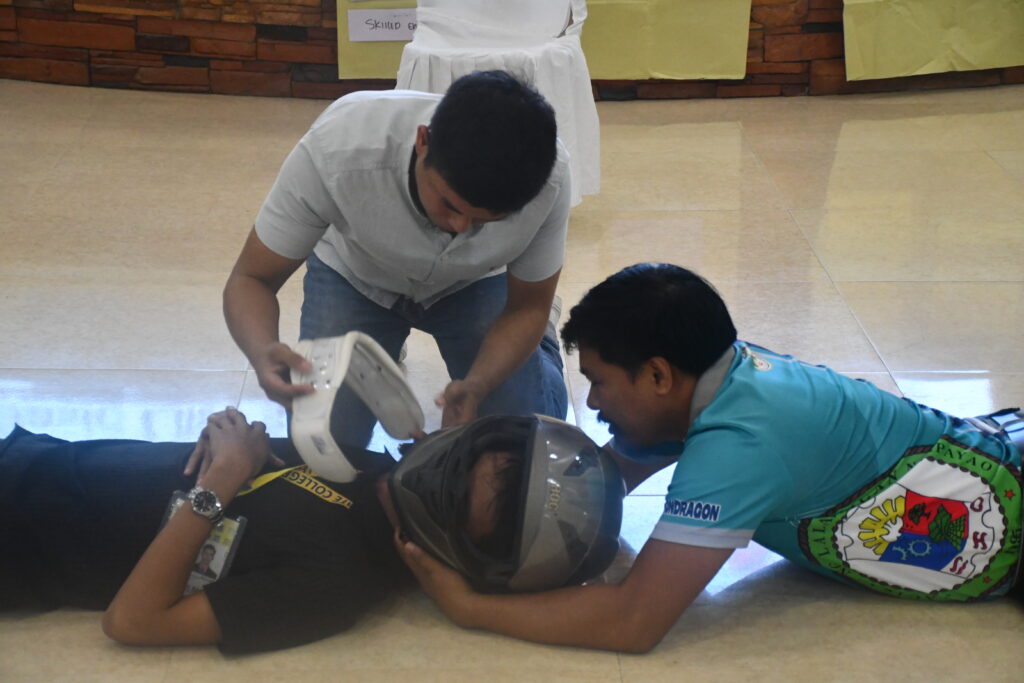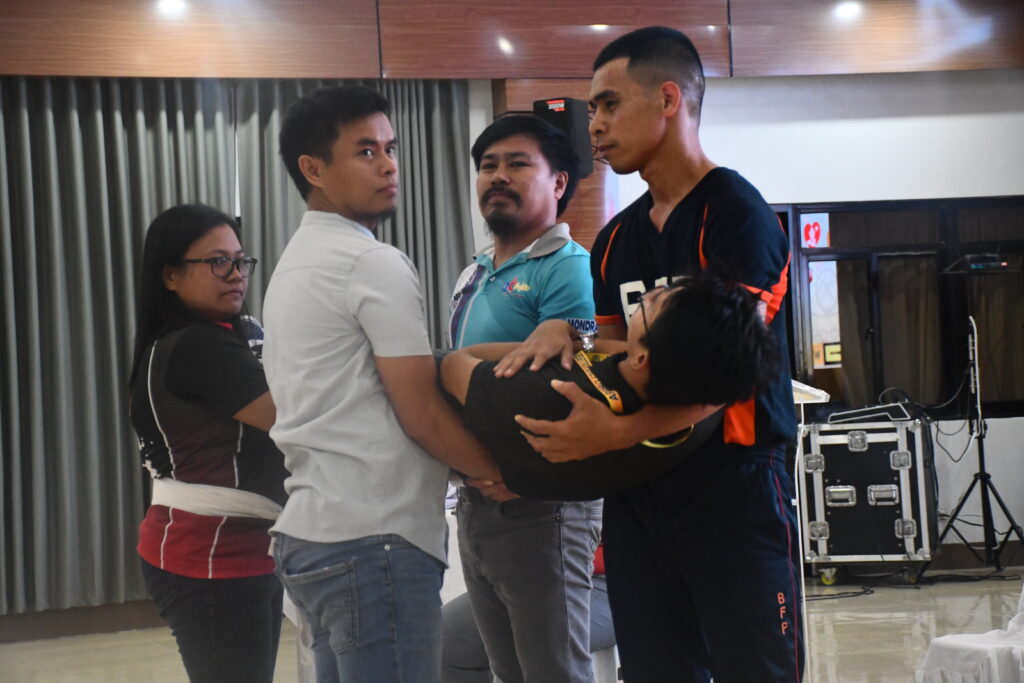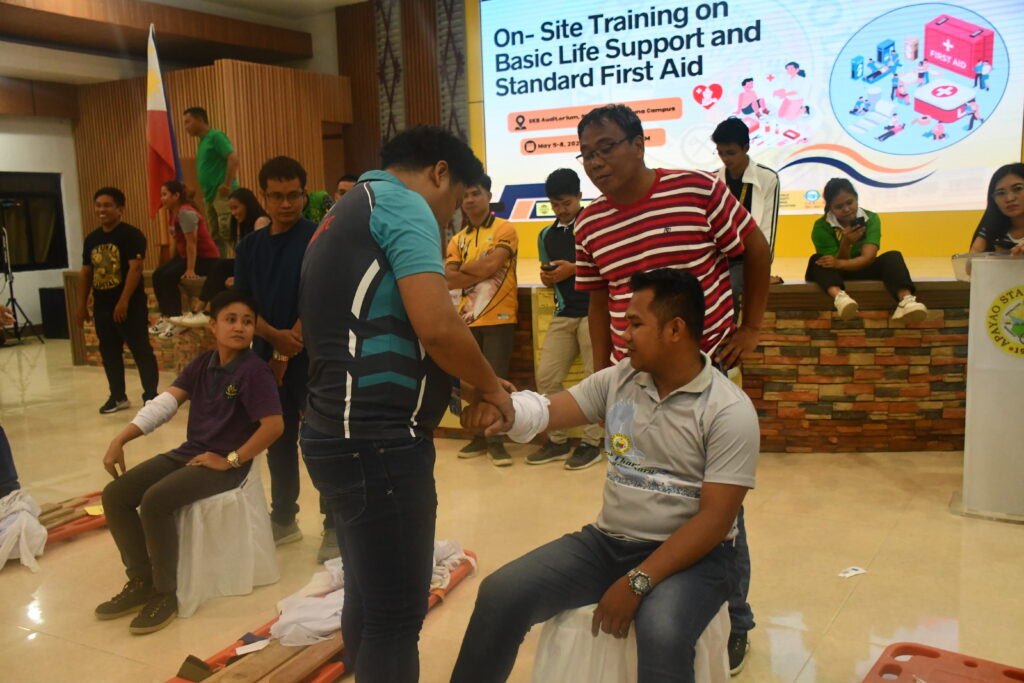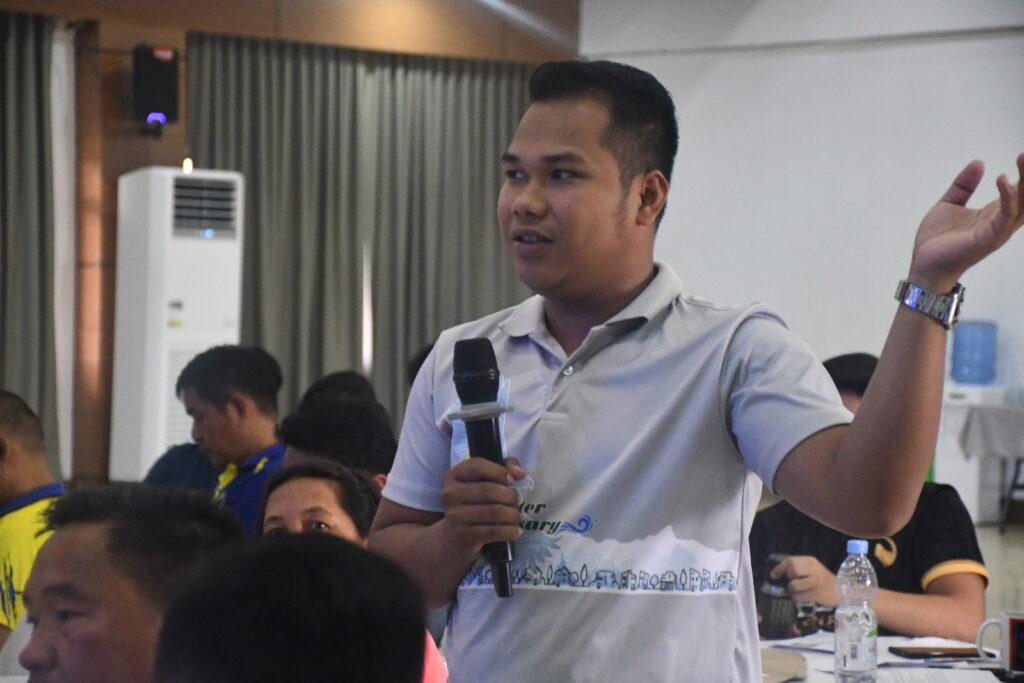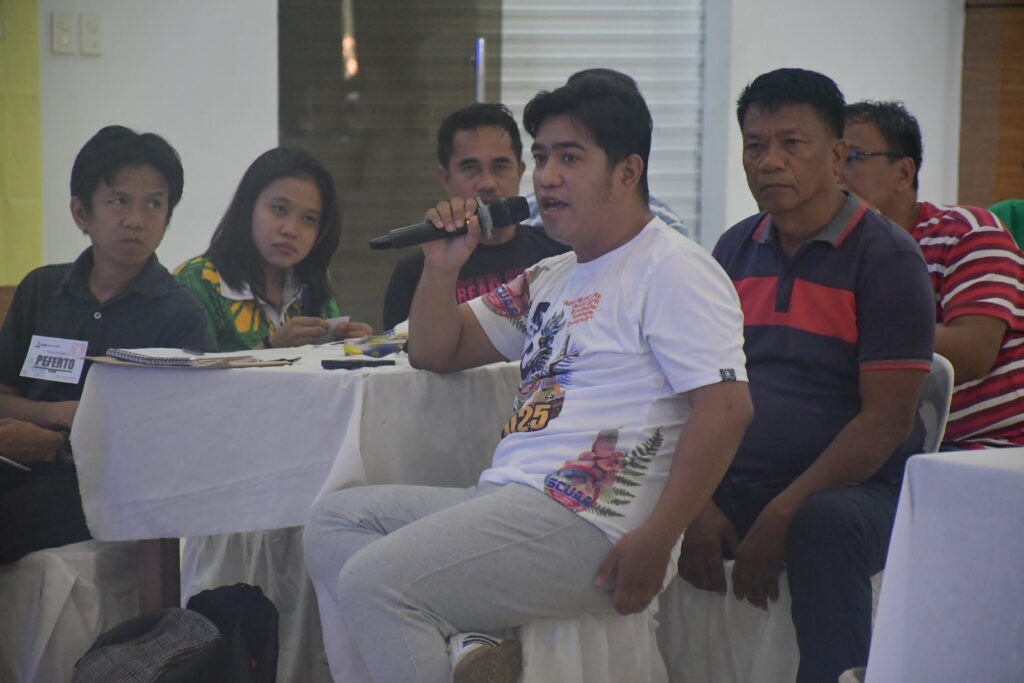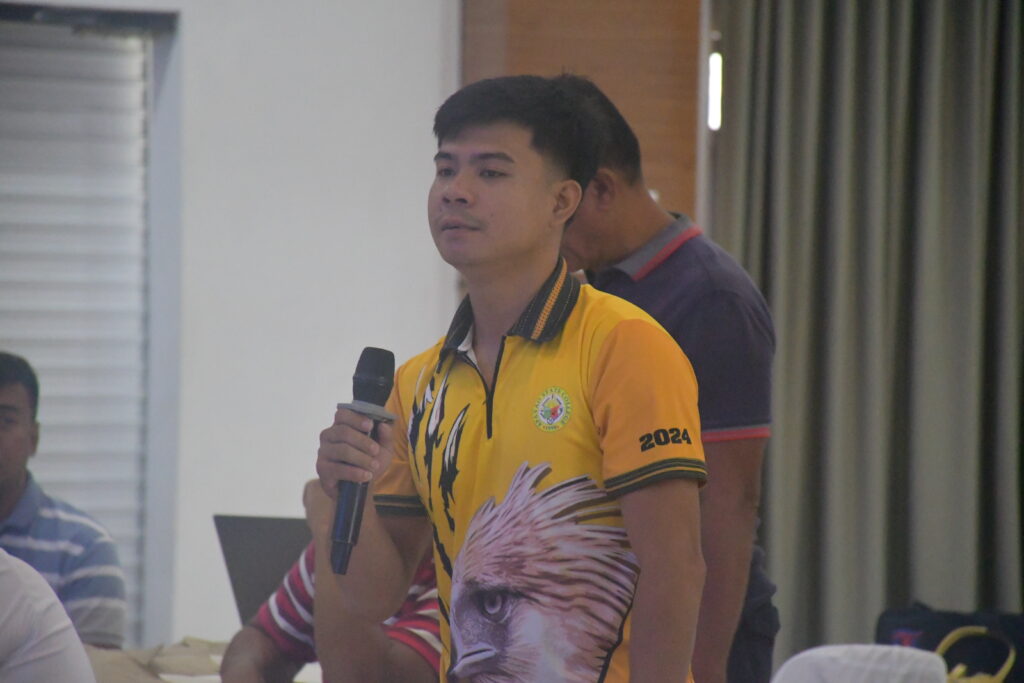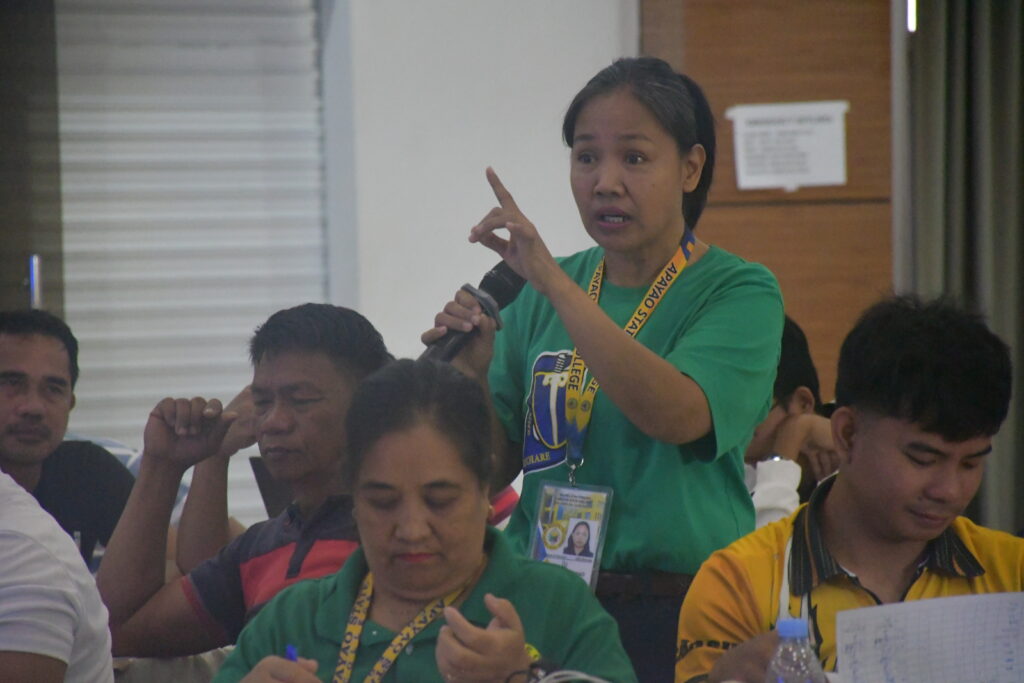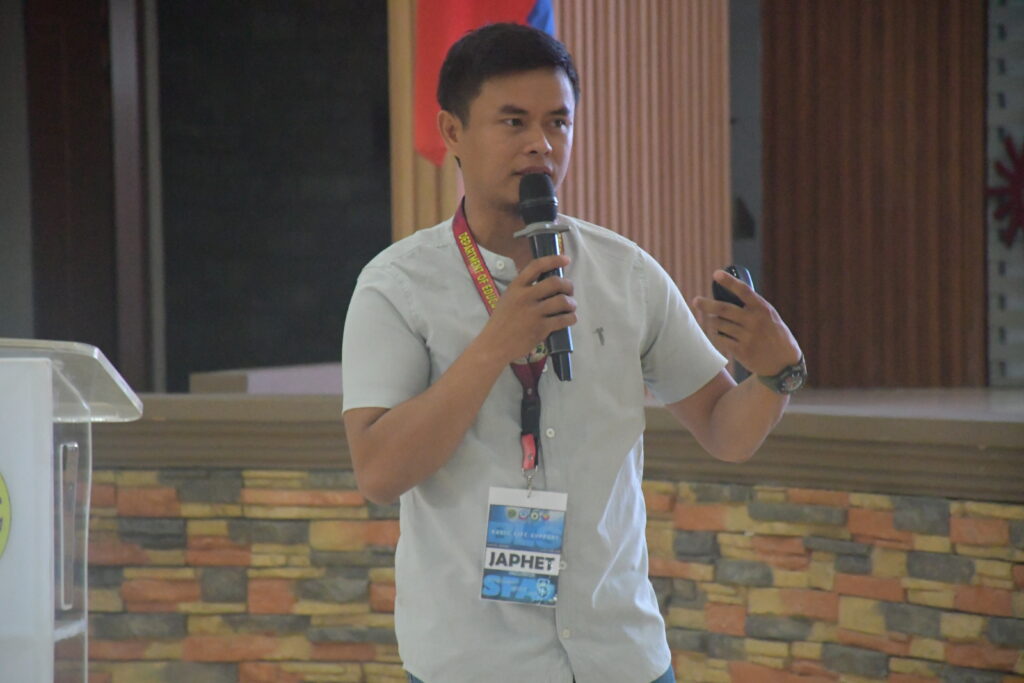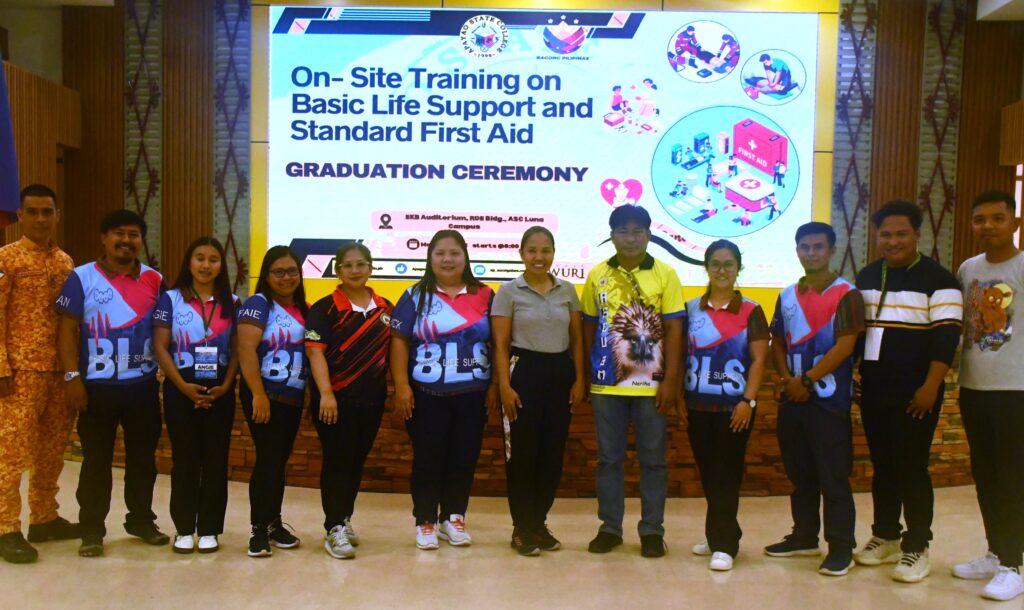by Shawn Raven A. Laud
Select teaching and non-teaching personnel of Apayao State College participated in a four-day Basic Life Support (BLS) and Standard First Aid Training held at EKB Auditorium from May 5 to 8 to enhance their readiness in responding to life-threatening emergencies.
The trainers were from the Far North Luzon General Hospital and Training Center, Schools Division Office of Apayao, Bureau of Fire Protection-Sanchez Mira, Amma Jadsac District Hospital, and the Provincial Health Office.
- Far North Luzon General Hospital and Training Center
- Reynald C. Materum, LPT, RN – Nurse II, Course Director
- Eden Chona A. Ramos, RN – Nurse I
- Schools Division Office of Apayao
- Juan R. Palattao Jr., RN, MPH, MPA – Nurse II
- Japhet B. Basan, RN – Nurse II
- Bureau of Fire Protection-Sanchez Mira
- SFO1 Apollo Pawangan, RN
- Amma Jadsac District Hospital
- Faie Antonette C. Ramos, RN, MSN – Nurse I
- Marivick G. Doroni-Balaweg, RN – Nurse I
- Provincial Health Office
- Angelina A. Bartolome, RM – Midwife
- Donnah Jane Gozum, RN, MSN – Disaster Risk Reduction in Health Manager
Following the Department of Health–Health Emergency Management Bureau (DOH-HEMB) participant workbook, the training delved into a blend of theoretical instruction and practical application. Sessions addressed critical life-saving topics such as:
- Principles of Emergency Care
- Introduction to Basic Life Support
- Cardiopulmonary Resuscitation (CPR) and Use of Automated External Defibrillator (AED)
- Respiratory Arrest, Rescue Breathing, and Foreign Body Airway Obstruction
In addition, the training encompassed essential First Aid procedures, including:
- Emergency Action Principles
- Response to Medical and Trauma Emergencies
- Environmental Emergencies
- Transporting the Injured
- Handling of Special Emergency Scenarios
The trainers also covered the legal foundations for BLS training in the Philippines, emphasizing its institutional significance. Key legal references included:
- Administrative Order No. 155 s. 2004 – Mandates BLS training for all health workers
- Department Memorandum 2021-0134 – Updates national BLS guidelines in accordance with 2020 CPR standards
- Republic Act No. 10871 (Basic Life Support Training in Schools Act) – Requires BLS training in schools
- DOH-HEMB Goal – Aims for a “CPR-Ready Philippines,” with at least one BLS-trained individual in every household
Participants were allowed to apply the skills they acquired during the training through hands-on demonstrations. These featured one- and two-rescuer CPR for adults and infants, bag-valve-mask (BVM) ventilation, and the use of automated external defibrillators (AED) in managing out-of-hospital cardiac arrest (OHCA). They also practiced managing foreign body airway obstruction (FBAO) in both infants and adults with rescue breathing techniques.
Participants demonstrated proper bandaging, immobilization techniques, and safe methods for transferring injured individuals in the first aid segment. To culminate the training, a simulated mass casualty incident was staged, where students acted as victims and the trainees carried out emergency response procedures in a realistic scenario.
